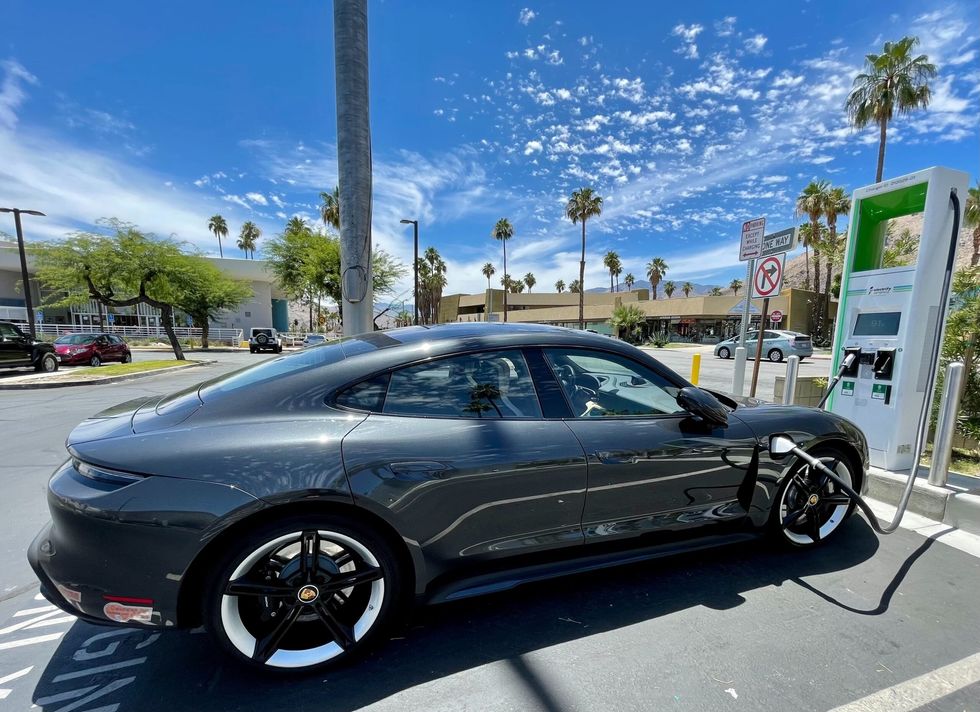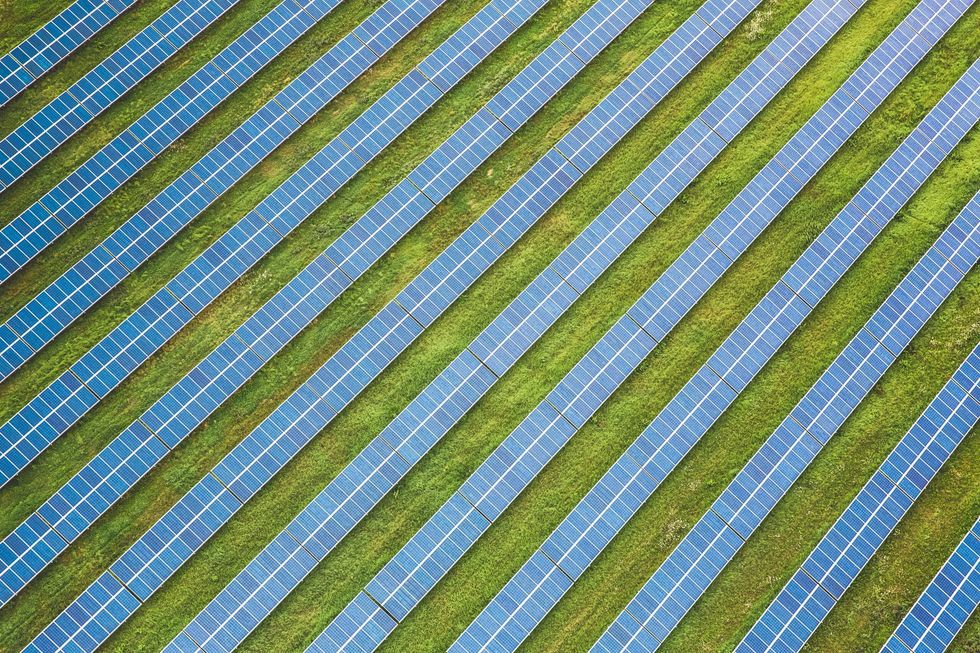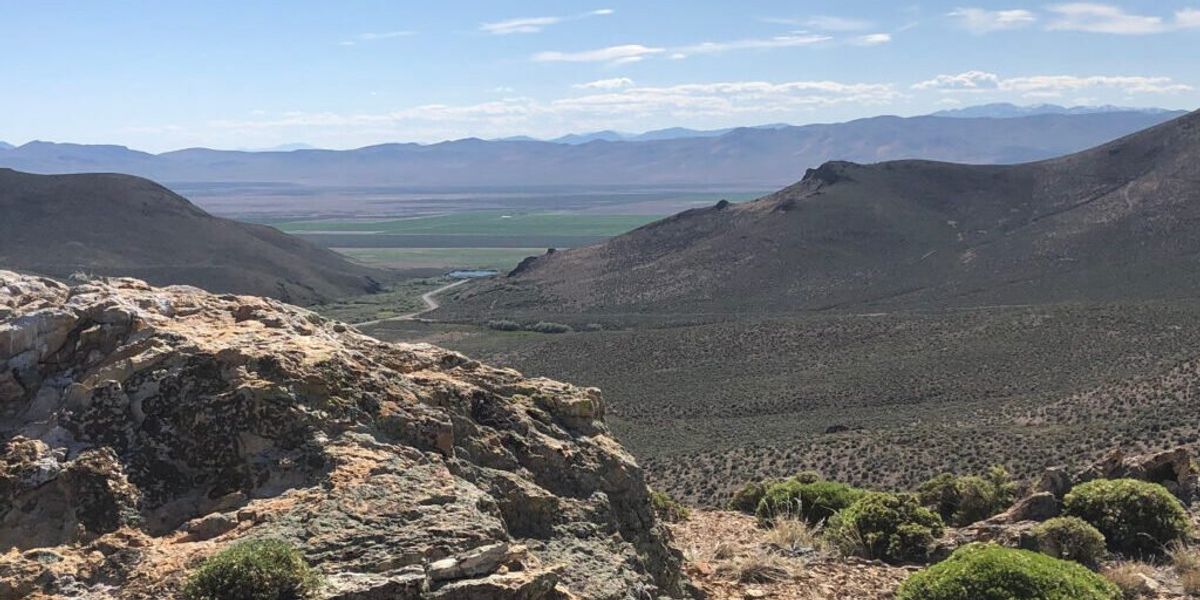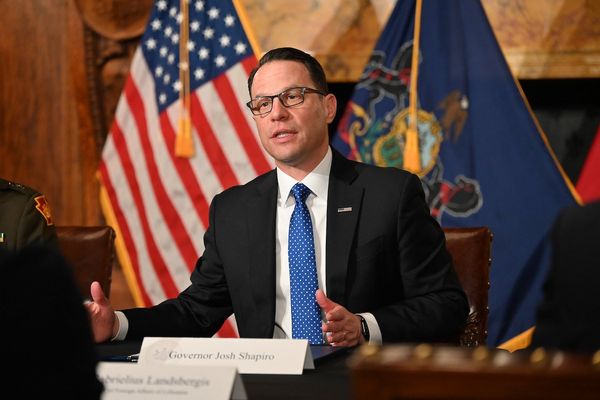In push to mine for minerals, clean energy advocates ask what going green really means
"We’re still living with contamination from these other abandoned mines,”
This story was originally published in The New Lede, a journalism project of the Environmental Working Group, and is republished here with permission.
A traveler crossing the expanse of northern Nevada desert known as Thacker Pass might see a wasteland – nothing but scrubby sagebrush out to the rim of the caldera, where the mountains cut the horizon.
But for local tribal members, the land they call Peehee Mu’huh, or “Rotten Moon,” is a hallowed place of remembrance and a sacred burial site. In 1865, US cavalrymen massacred their ancestors at the site, including children and elders. Members of the Fort McDermitt Paiute and Shoshone Tribe visit often, praying and sharing food together in the windswept wilderness.
Now, a contingent of forces that includes the US government and a large Canada-based mining corporation are pushing to make Thacker Pass a gateway to the future– they seek to carve into the landscape, extracting massive quantities of lithium for use in batteries that could power one million electric vehicles (EVs) per year. The mineral deposit at Thacker Pass is considered the largest known lithium source in North America, making it an important resource for “clean energy” technology that mitigates harmful climate change by curbing fossil fuel dependence.
Staunch opposition has formed around the project from local tribes as well as environmental advocates who argue the mining operation would threaten vulnerable wildlife and dangerously pollute the air and water just as similar mining project have in the past. But earlier this month a US District Court judge largely upheld the US Bureau of Land Management (BLM)’s 2020 decision to approve the mine. Though opponents vow to keep fighting, the court ruling allows Canada-based Lithium Americas to advance construction plans for the $2.2 billion project, and General Motors Co. (GM) recently announced plans to invest $650 million in the mine.
The Biden administration last year announced a series of incentives aimed at boosting supplies of lithium as well as other minerals such as nickel and cobalt deemed “critical” for use in electric vehicle production and other renewable energy needs, saying increasing supplies will help “improve America’s energy independence, strengthen national security, support good-paying jobs…”
But the battle over Thacker Pass illustrates just how complicated the issue is as environmental advocates find themselves presented with these thorny questions: What does “going green” really mean? What is the true cost of the clean energy revolution? And will vulnerable communities inevitably pay that price?
“This story is the same everywhere,” said Ian Lange, a professor of economics at the Colorado School of Mines. “If you don’t want to mine for minerals, we’re going to keep drilling for oil and gas.”
Damage is “a given”

Charging an EV.
Credit: WIA/Unsplash
As nations worldwide strive to combat climate change by transitioning to renewable energy, they find themselves grappling with how to avoid repeating the mistakes of 150 years of fossil fuel production. Mountaintop removal – an extreme coal mining practice – has destroyed more than 500 Appalachian mountains and 2,000 miles of streams. Natural gas wells have polluted air and water and oil spills have poisoned marine ecosystems. More than 17 million Americans are threatened by air pollution from oil and gas production.
The fears Thacker Pass community members have about mining stem from years of experience – mercury and copper mines in the area have already left their mark.
“Out here, we’re still living with contamination from these other abandoned mines,” said Gary McKinney, a member of the Duck Valley Shoshone Pauite Tribe and a Fort McDermitt tribal descendant. “If you drink the water, it doesn’t smell good. If you consume it, it upsets your stomach.”
McKinney said multiple community members who worked at a mercury mine in the area have since died from cancer, including members of his own family.
Lithium Americas pledges that the mine at Thacker Pass will be different. The company says it will take care to protect water quality, limit water use and avoid sensitive environmental habitats. But critics say damage to the community is inevitable.
“Any large mine is going to do a lot of environmental damage – that’s kind of a given” said John Hadder, Director of Great Basin Resource Watch, a regional environmental justice nonprofit in Nevada.
Hadder worries about how the project will affect water in this region where water is already scarce, fearing local farmers and ranchers may be displaced.
“What has happened in a lot of places in Nevada is that once a mine has established a foothold in the area, they begin to acquire more water and more land as they expand, and eventually it becomes a mining district,” he said.
Lithium Americas also plans to construct an on-site sulfuric acid plant for extracting lithium from clay and stone, an industrial facility that Hadder said will change “the whole nature of the area in terms of sound, light, traffic, and noise” as shipments of sulfur and other materials constantly arrive and depart.
Since the mine overlaps priority sage grouse habitat, an iconic western bird that has declined by 80% since 1965, Hadder also worries about how the mine will affect the species’ future.
The burden of mitigating climate change should be borne collectively, Hadder said, not laid on the backs of small communities.
Neither Lithium Americas nor BLM replied when The New Lede asked how they will address concerns raised by tribes and environmental groups as the project moves forward.
While it is not yet clear if Lithium Americas will expand its mining operation beyond Thacker Pass, Hadder said he wouldn’t be surprised.
“I would gamble that if they get a foothold in Thacker Pass they will expand because there are lots of lithium deposits in the region,” he said.
Weighing the risks and benefits

Thacker Pass mine opponents protest outside courthouse during January 5 hearing.
Credit: Ashley McKinney
According to a World Bank Group report, production of critical minerals could increase by almost 500% by 2050. The report estimates that deploying enough renewable technology to avert global warming above 2°C will require over 3 billion tons of minerals and metals.
But mining those minerals also contributes to greenhouse gas emissions. The mining industry currently accounts for about 4-7% of global greenhouse gas emissions ,with a large portion of these emissions coming from the considerable quantities of diesel fuel that mining operations burn as they move and process ore onsite and ferry in supplies from remote locations.
“While deploying renewable energy is one of the most effective ways to decarbonize the electricity sector, the mineral intensity of clean energy technologies must be addressed,” the report states. “Even if the emissions from the mineral production and operation of clean energy technologies are just 6% that of coal and gas generation, the emissions are not insignificant.” A report by the International Energy Agency determined that while emissions from producing critical minerals would be “significant,” these emissions “do not negate the climate advantages of clean energy technologies.”
The report identified heavy water use and potential contamination, waste generation, and impacts on biodiversity as further mining risks that must be addressed.
“I think [the biodiversity impacts] are real, but I don’t think they should stop us from seeking to produce the minerals needed to support a renewable energy transition,” said Laura Sonter, a researcher at The University of Queensland in Australia who studies how to conserve landscapes under development pressures. Mitigating climate change through the use of these minerals would “achieve huge outcomes for biodiversity conservation,” she said.
“It’s less about preventing new mining operations in general, across the board, and more about getting a better understanding of where these commodities can be sourced from in a way that minimizes the biodiversity damage that they can do,” said Sonter.
Some companies, nations, and nongovernmental organizations have started signing on to specific strategies to help ensure critical minerals are mined more sustainably The US, Canada, Australia and other countries have joined the Minerals Security Partnership (MSP), which encourages high environmental and social standards as countries mine minerals for EVs and advanced batteries.
The Initiative for Responsible Mining Assurance (IRMA) offers mine site certifications based on independent third-party assessments of a mine’s impact on communities and the environment. Its several dozen members include both GM, which recently invested in Thacker Pass, and Great Basin Resource Watch, which has vehemently opposed the project. In a recent open letter to the US government, IRMA called for the US and other MSP members to require that critical minerals projects follow IRMA’s standards.
The European Commission’s upcoming Critical Raw Materials Act, which would speed up mine permitting in Europe, may also include updates to European Union mining waste legislation and call for an EU critical metals agency to monitor compliance with environmental standards for mined materials.
“I think the science is trying to catch up with just how much interest there is from industry and government at the moment to demonstrate they can produce these minerals in a way that is not counter to commitments that nations made at the Convention on Biological Diversity,” said Sonter.
“A necessary evil”

A solar energy farm in Germany.
Credit: Markus Spiske/Unsplash
The Center for Environmentally Sustainable Mining (CESM) at the University of Arizona works with, and receives funding from, international copper mining companies to help them explore restoration strategies for mined sites once they cease to operate.
One CESM project involves drilling boreholes into a pile of topsoil scraped from a valley 15 years ago by a copper mining company. The researchers hope to determine if the company can revitalize the land with the soil when the mine closes in a few years.
“We have no method other than copper wires to conduct electricity,” said Julie Neilson, Director of CESM. “That’s a premise you have to start from when you’re dealing realistically with copper mining. It’s sort of a necessary evil. The question is, where are the areas where we can make it more sustainable?”
Mining is “inherently extremely destructive,” according to Neilson, who acknowledges that certain areas are so sensitive environmentally that they probably should not be mined. Part of the focus on extracting critical minerals through mining must involve strategies for recycling them, according to Daniel Bresette, President of the Environmental and Energy Study Institute (EESI), a US nonprofit that informs environmental and energy policies.
“There are resources already in circulation, and it’s a real shame to think about some of that ending up landfills when they could be repurposed into clean energy technologies,” he said.
The Biden administration recently announced a $2 billion loan guarantee for Redwood Materials Inc., a company based in Nevada that manufactures EV battery parts from both new and recycled materials. Recycling these materials needed for green energy reduces the need for more mining, but even recycling minerals requires energy.
More policy measures are needed to scale up recycling work, according to the World Bank report, though the report suggests new mineral extraction would still be necessary to meet demand for low-carbon technologies even if 100% of end-of-life mineral technologies were recycled.
Some researchers say transitioning to renewable technologies such as EVs simply isn’t enough, calling for a cultural shift towards less consumption. To achieve zero-emissions transportation with less lithium mining, a recentreport concludes that the US should reduce its dependency on cars and limit EV battery size, as well as develop a robust lithium recycling system. Together, it suggests these actions could reduce lithium demand by up to 92% in 2050.
Max Wilbert, an anti-mining activist with the organization Protect Thacker Pass, questions the basic premise that EVs are an answer to the climate crisis, calling such technologies “cosmetic tweaks” that perpetuate a “completely unsustainable” way of life. Wilbert said that those advocating for mainstream climate change solutions are taking industrialized nations’ current lifestyles as a given.
“They’re not fundamentally asking, ‘How can we save the planet?,’” Wilbert said. “They’re asking, ‘How do we save our way of life?’ How do we save this industrial modernity that we’ve become so used to?’”
“I think using a smaller shovel still continues getting you deeper into the hole that this culture has been digging for a long time,” he said. “We don’t need a different kind of shovel. We need to stop digging.”







